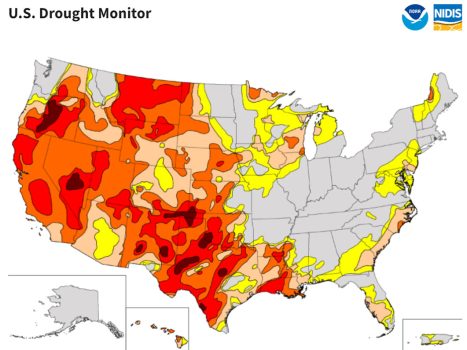In a March 28 release from the USDA, Secretary of Agriculture Tom Vilsack commented extensively on the President’s Budget for fiscal year 2023 that was submitted to Congress that day.
The release stated that President’s Budget details his vision to expand on the historic progress our country has made over the last year and deliver the agenda he laid out in his State of the Union address—to build a better America, reduce the deficit, reduce costs for families, and grow the economy from the bottom up and middle out.
Secretary Vilsack said, “The President’s budget provides USDA with the tools needed to support a vibrant, revitalized, and prosperous rural America. It contains transformational investments that will help rural communities build resilience to the climate crisis, increase landscape resiliency to the impacts of climate change, create more and better markets for our hardworking producers, bolster access to healthy and affordable nutrition for families, help connect all Americans to high-speed, affordable, and reliable internet, strengthen USDA’s efforts to build equitable systems and programming, and position the United States to be a leader in Agricultural Research. It will also help many of USDA’s agencies rebuild capacity after years of staff losses, strengthening the Department so we can better perform our duties and serve the American people. This budget proposal is a statement of intent that underscores President Biden’s commitment to the success of rural Americans and their communities.
The release said, “The Budget makes critical investments in the American people that will help lay a stronger foundation for shared growth and prosperity for generations to come. At USDA, the Budget would:
- Invest in climate resilience and U.S. agriculture’s ability to be part of the climate solution. As part of President Biden’s whole-of-government approach to confronting the climate crisis, the Budget proposes $1.177 billion in funding to address climate change across private, working agricultural land. The Budget proposes $1 billion to support agricultural producers and landowners to undertake conservation and climate-smart practices on agricultural lands. The Budget builds on the $618 million investment to protect and restore watersheds made in the Bipartisan Infrastructure Law by proposing an additional $135 million for these efforts.
“The Budget also builds on the $5.5 billion investment in the U.S. Forest Service made by the Bipartisan Infrastructure Law to reduce the risk of wildland fire, restore ecosystems, and protect communities. It proposes increases of $285 million for forest restoration activities on National Forest Service lands and $5 million for Forest Inventory and Analysis. The Budget includes $390 million in additional funding to ensure ongoing support for President Biden’s direction that no firefighter is paid less than $15 per hour, hire additional firefighters, increase their pay, and convert more firefighters from temporary to permanent. These changes support USDA’s ability to confront the wildland fire crisis due to longer fire seasons associated with a changing climate.
- Prioritize consistent access to safe, nutritious food for all Americans. USDA’s core nutrition programs are the most far-reaching, powerful tools available to ensure that all Americans, regardless of race, ethnicity, or background, have access to healthy, affordable food. The Budget proposes $111 billion for the Supplemental Nutrition Assistance Program (SNAP), a budget level that supports 43.5 million Americans per month. It maintains funding for the Special Supplemental Nutrition Program for Women, Infants, and Children (WIC) at $6 billion. In 2023, an average of 6.4 million low-income women, infants, and children are expected to participate in the program each month. The budget also proposes to continue the provision of enhanced Cash Value Benefits (CVBs) through 2023 to ensure that all participating women and children have access to the scientific-based recommended level of fruits and vegetables thereby improving health outcomes as well as program retention.
- Build stronger rural economies. The President’s Budget invests $935 million in rural America. It builds on the $65 billion investment made by the Bipartisan Infrastructure Law to make high-speed internet available to all Americans, bring down high-speed internet prices across the board, and provide technical assistance to rural communities seeking to expand broadband through an additional $113 million over the 2022 enacted level for Reconnect to provide access to quality broadband to rural residents and address challenges for Tribal communities. Access to high-speed internet serves as an economic equalizer for rural America while creating high-paying union jobs in rural America. The Budget also provides $300 million to bring affordable electric power to rural residents, Tribal communities, community facilities, schools, and medical institutions that perform critical services each day. The Budget also provides $1.9 billion and includes a requirement that funding for construction, preservation, or rehabilitation will be targeted to projects that improve energy or water efficiency, implement green features, and address climate resilience.
- Develop more and better markets for U.S. agricultural products. USDA is working to transform the nation’s food system by making it fair, competitive, distributed, and resilient and by building new markets at home and abroad. The Budget builds upon the Biden-Harris Administration’s efforts to create a fairer, more competitive, and more resilient meat and poultry supply chain by providing more than $10 million for oversight and enforcement of the Packers and Stockyards Act. It also provides support to the Food Safety and Inspection Service to help small and very small processing facilities by reducing user fees. The Budget also provides money to support innovation in agriculture and livestock industries, including $22 million for the Dairy Business Innovation Initiatives, for example, which supports dairy businesses in the development, production, marketing, and distribution of dairy products.
- Ensure underserved groups can more fully access and participate in USDA programs and services. Since day one of the Biden-Harris Administration, USDA has taken bold, historic action to root out generations of systemic racism, to deeply integrate equity in decision-making and policymaking, and to build equitable systems and programming inclusive of all of its employees and the American people. The Budget supports ongoing efforts to help agricultural producers and landowners resolve heirs’ land ownership and succession issues by proposing a program level of more than $60 million. In this Budget, the National Institute of Food and Agriculture proposes more than $315 million for Minority-Serving Institutions (MSI), an increase of more than $53 million above the 2021 Enacted level. The Budget also proposes $39 million for the Rural Partners Network – a renewed and expanded initiative to leverage USDA’s extensive network of county-based offices to help people in high-poverty counties, including energy communities.
“The Budget makes these smart investments while also reducing deficits and improving our country’s long-term fiscal outlook.
For more information on the President’s FY 2023 Budget, please visit www.whitehouse.gov/omb/budget.”


